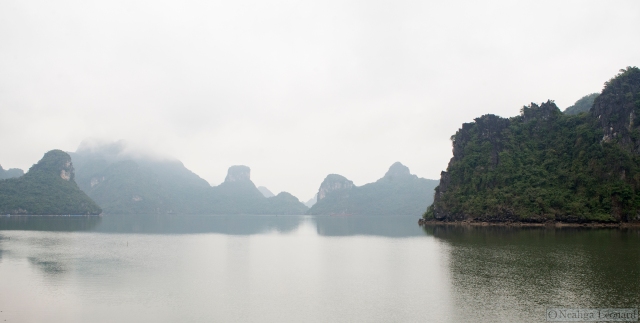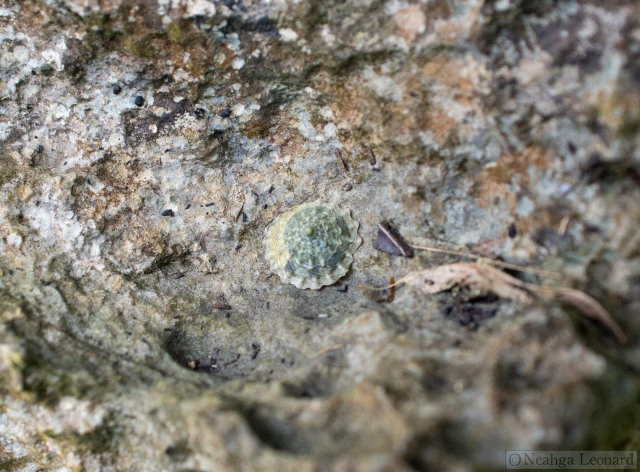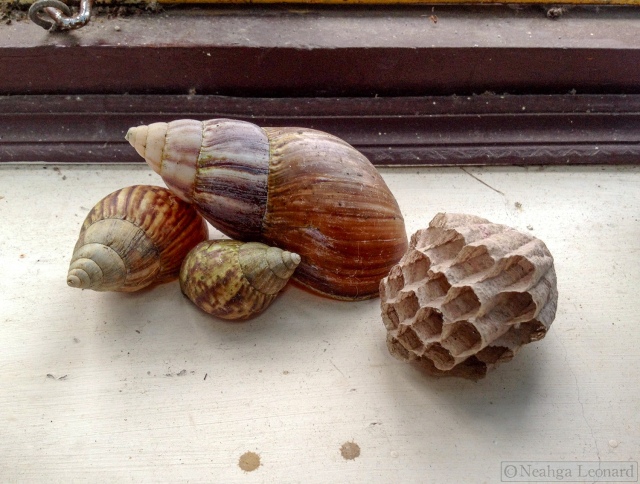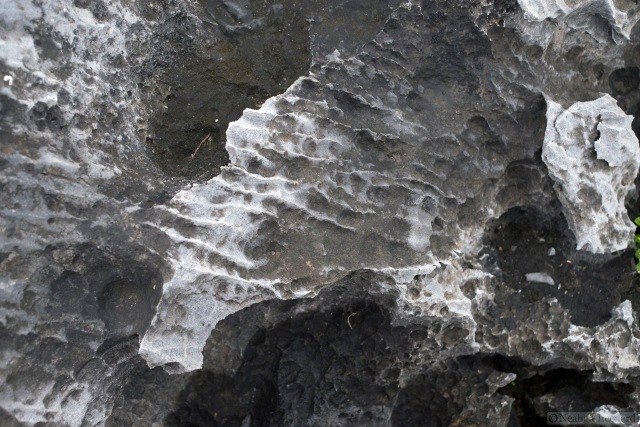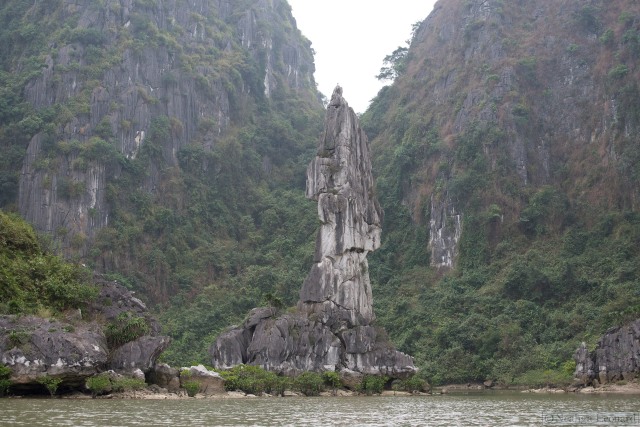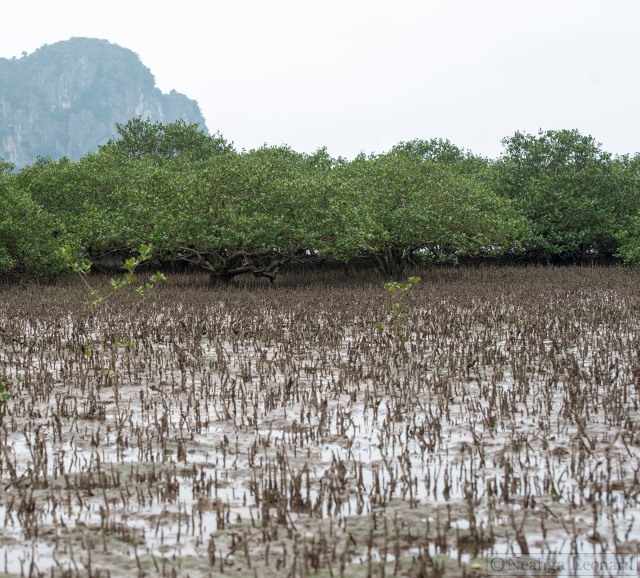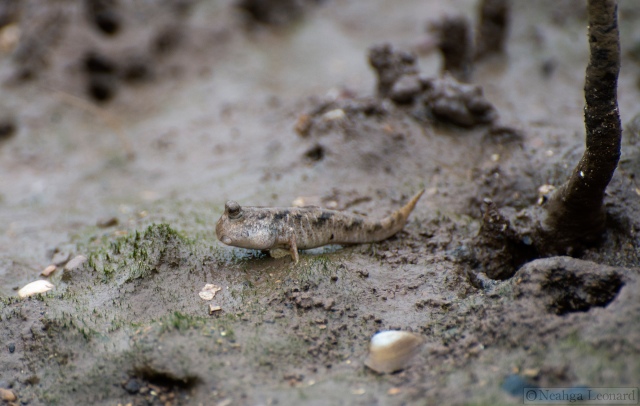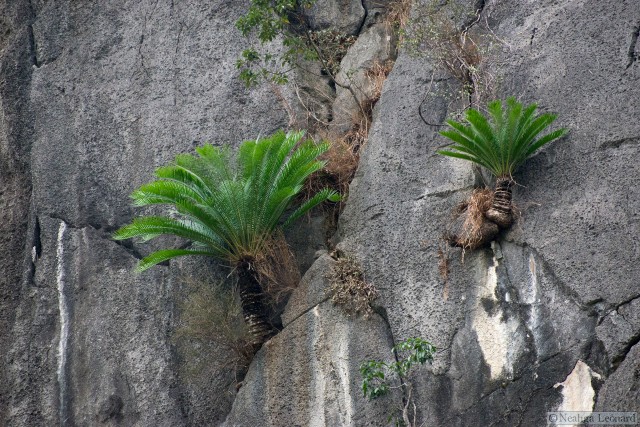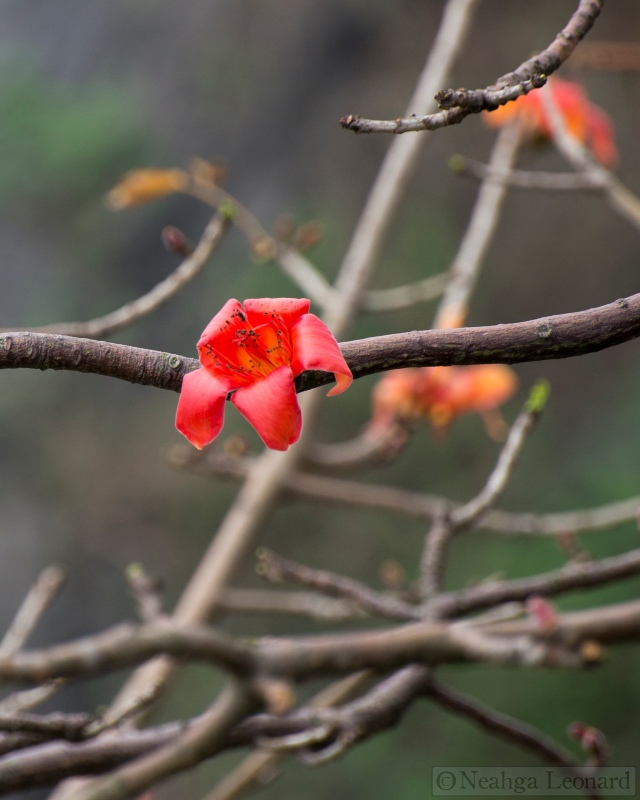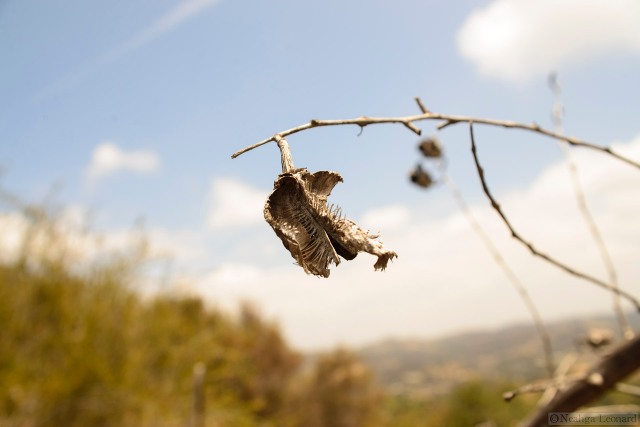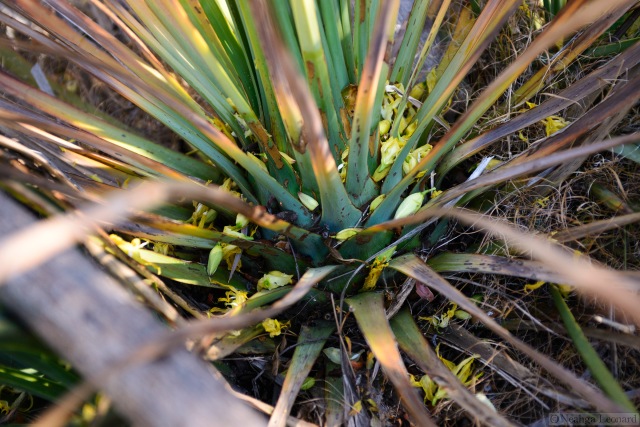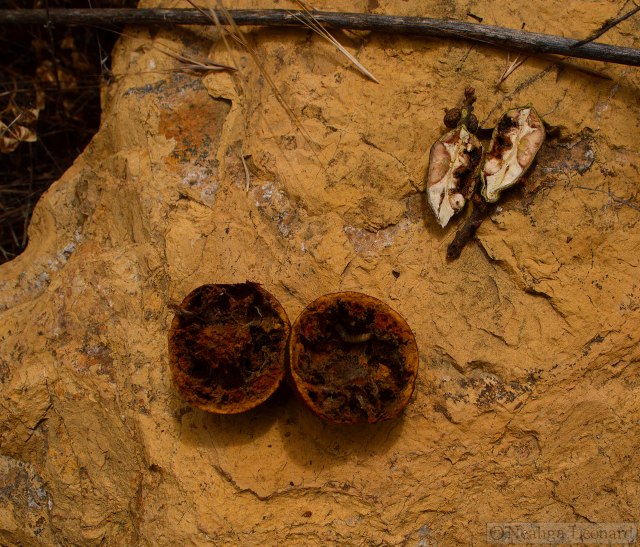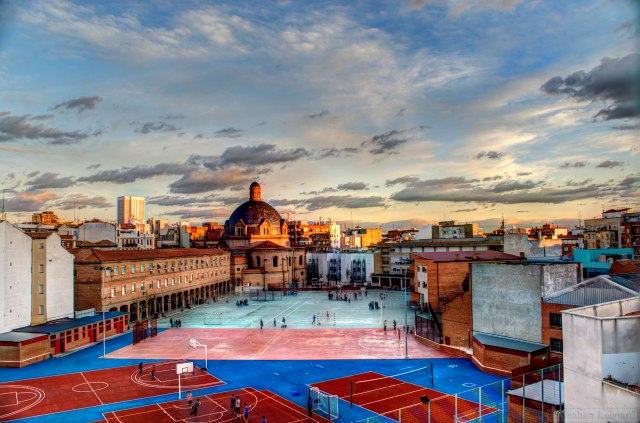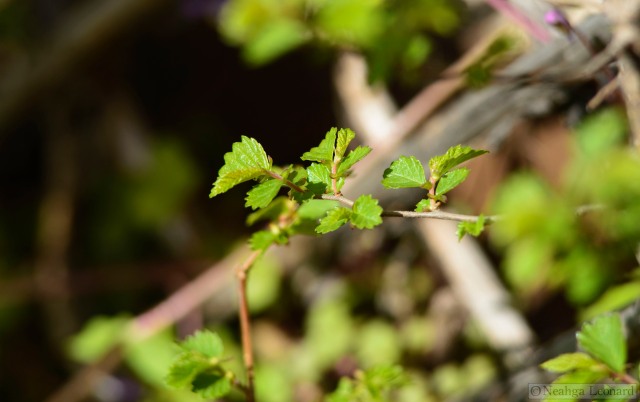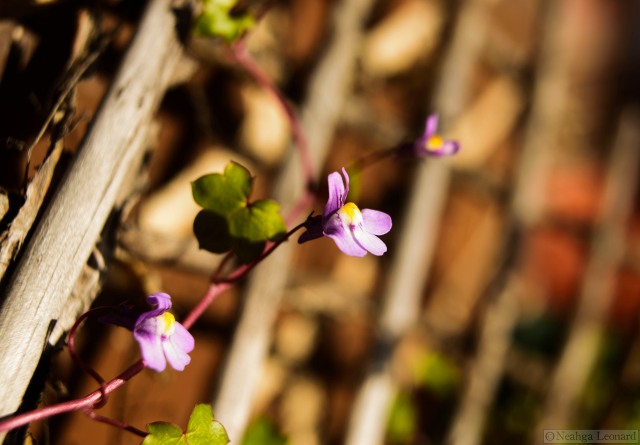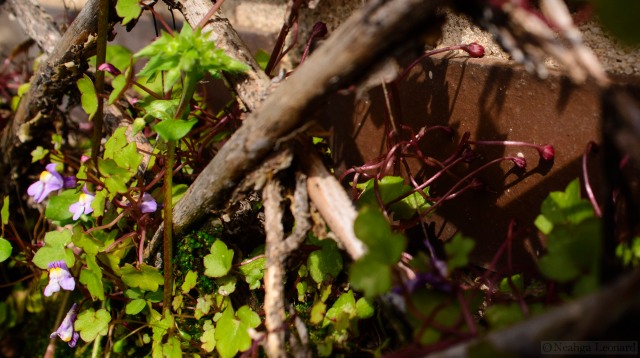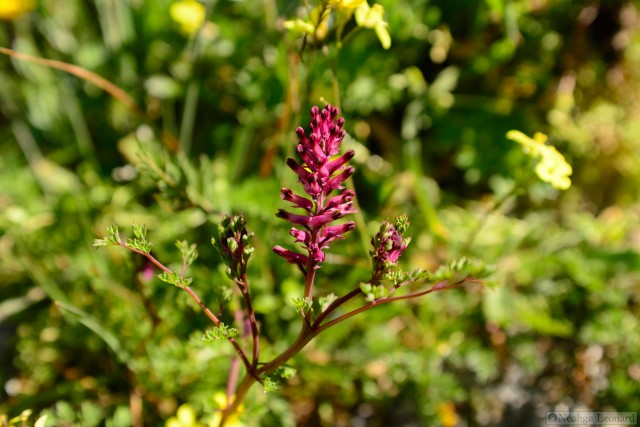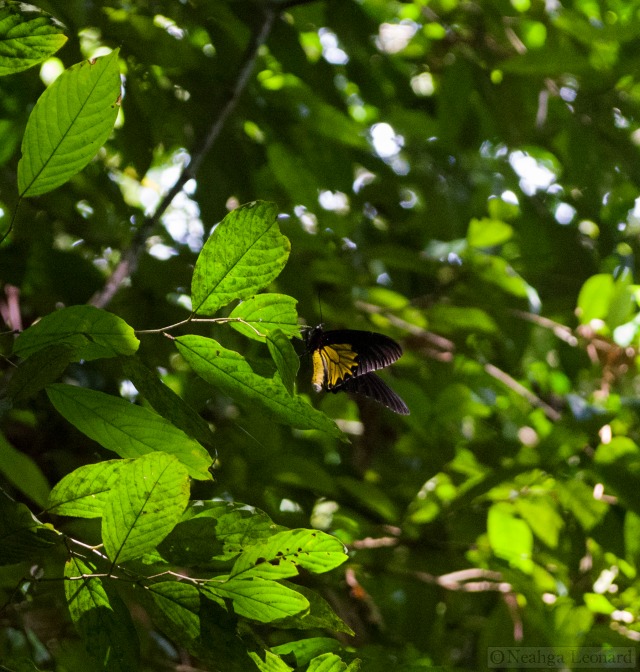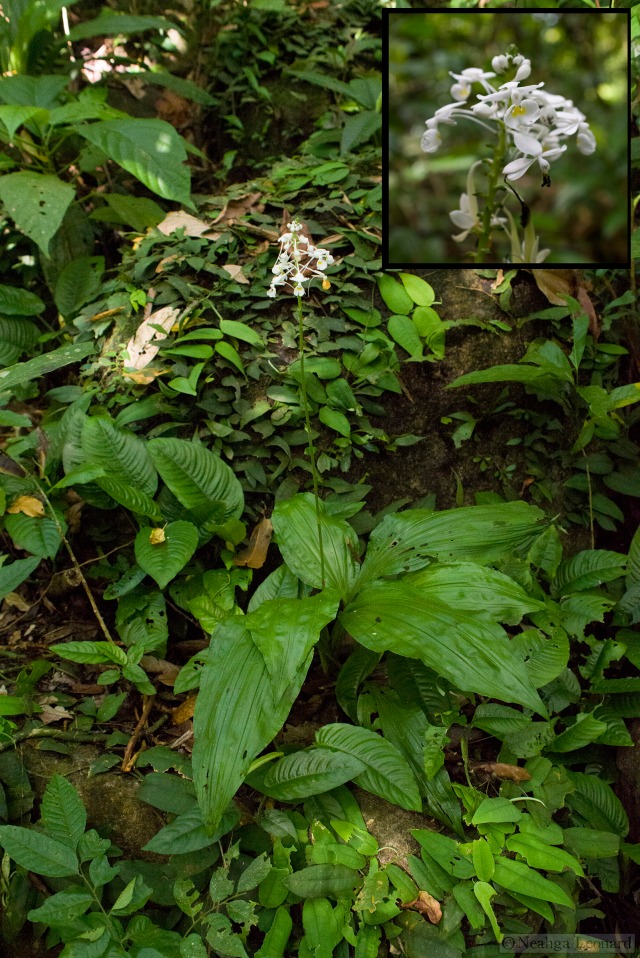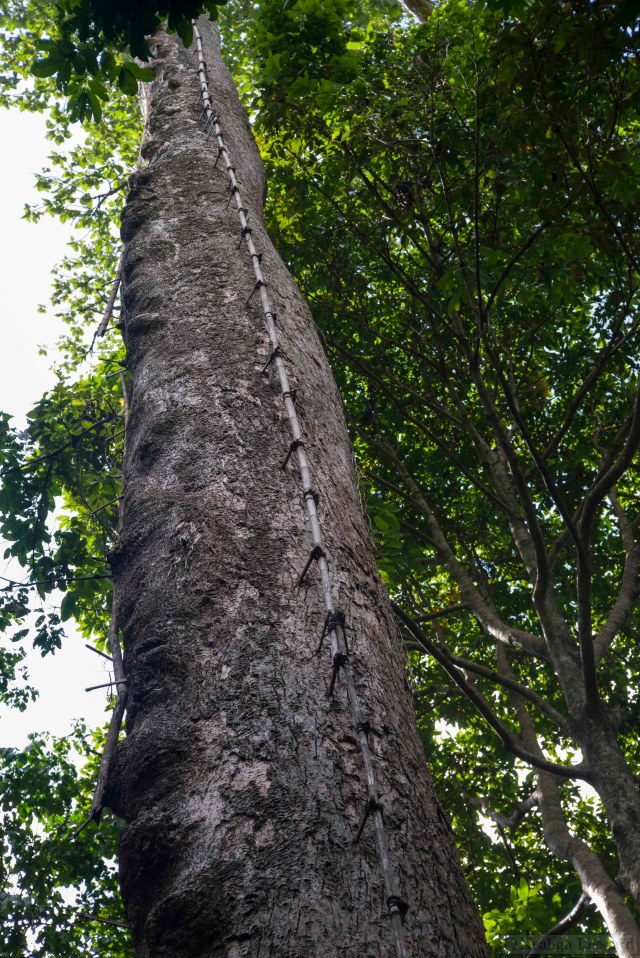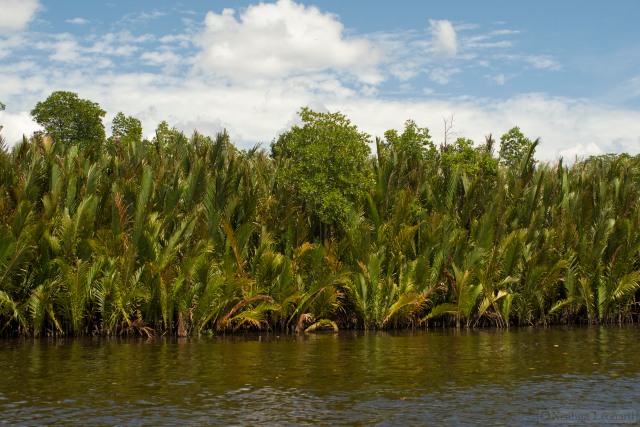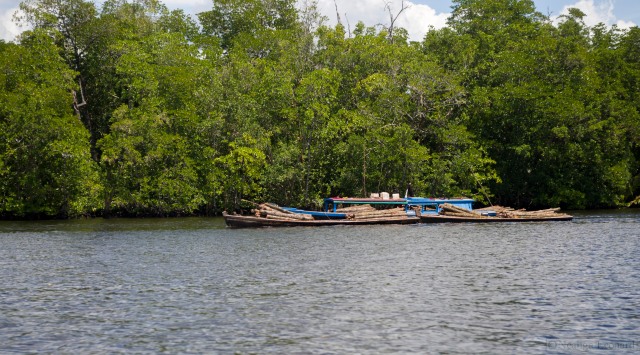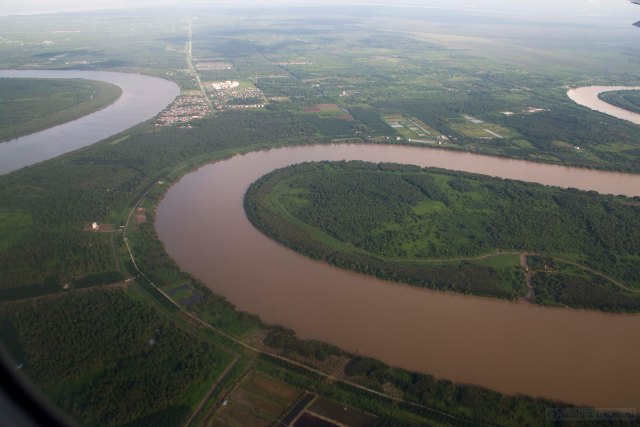Plants, as you might imagine, devote a great deal of energy to defending themselves from predators. We humans have a natural bias towards animals, creatures that are like us in that they are mobile and respond to stimulus on a timescale similar to ours. Plants operate, with a few notable exceptions, on a slower timescale, but this in no way should be taken to imply that they are any less interactive vis-a-vis their surroundings.
Plants react to light and dark, sense gravity, moisture, nutrients, and toxins; some can “feel” other organisms (Venus fly traps for example) or “hear” sounds (sensitive plants). One thing all organisms must cope with is predators and competitors, and all organisms need defenses against these threats. Plants are no different in their needs, but they are largely immobile, so some of their defenses tend to take a different form than they do in animals. Surprisingly, their defenses are not as different from animal defenses as one might expect. I would break plant defenses into three broad categories: chemical, physical, and co-optive.
Chemical defenses often involve toxins of one sort or another or pungent aromas. Some of these we assiduously avoid, such as certain members of the Sumac (Anacardiaceae) family like poison oak (Toxicodendron diversilobum) and poison ivy (Toxicodendron radicans) due to the allergen urushiol found in the sap. Other plants using chemical defenses we consume with great relish, many of our foods and spices, for example, derive their strong flavors from the defenses the plant manufactures to deter herbivorous predators. Mints (Lamiaceae), rosemary, cinnamon, peppers, and onions are good example of common foods we consume that utilize strong chemical defenses. Other chemical defenses we find recreational and/or medical uses for; ephedrine from plants in the Ephedra family, THC from Cannibus, and cocaine refined from alkaloids found in the coca family (Erythroxylaceae) all have enormous economies reliant on them.
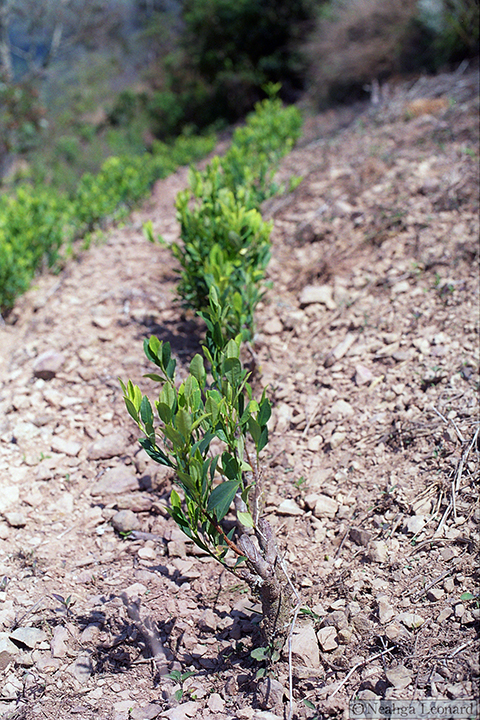
Coca cultivation in Bolivia near Coroico
Chemical defenses are enormously interesting and extremely sophisticated, but they are largely hidden from us until we are affected by them. This is part of the reason why eating unfamiliar plants is so dangerous, there are few good ways to determine if a plant is edible upon first encounter.
Physical defenses are the most obvious to us, especially when they come in the form of thorns and barbs, but those defenses barely scratch the surface of the types of physical defenses plants can employ.
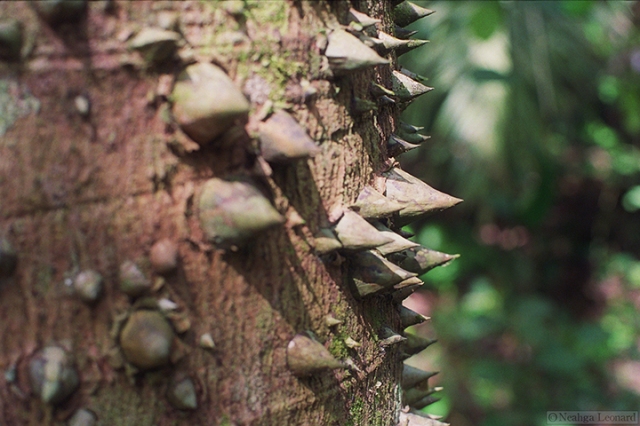
An impressive but unsubtle defense – Ceiba speciosa in the Bolivian Amazon
Sharp pokey bits may defend plants against larger herbivores and chemicals help to protect them from insects or pathogens, but other plants themselves can be, if not predatory, at least detrimental to large trees. Lianas and other climbing plants, epiphytes, parasitic plants, and even other large trees may need to be defended against.
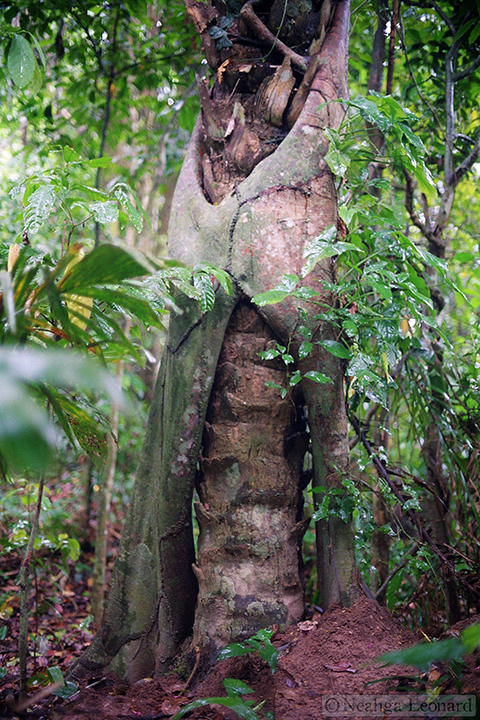
Strangler fig (Ficus spp.) overwhelming a palm tree’s defenses – Bolivia
The photo above I find particular interesting as the palm tree being overwhelmed by the strangler fig usually has an effective counter to this sort of attack. Palm trees and tree ferns both allow their old fronds to droop as they age, sheathing the trunk and providing a structure for climbing plants to adhere to. Eventually these canny plants shed their dead fronds, and with them the uninvited plant guests that have taken up residence. Many trees employ a similar strategy, eucalyptus and madrone have smooth bark that regularly sloughs off in strips. The combination of smoothness and shedding makes it difficult for other plants to gain purchase.
Strangler fig is a generic term for a wide variety of tropical fig trees sharing a similar life strategy. These are the “matapalo” or killer trees. Rather than growing from the ground and climbing up these trees co-opt animals to carry their tiny seeds through the canopy. A small portion of these seeds wind up in a place like the crotch of a branch or a broken limb where organic material has built up. The young fig sends dangling roots down from the canopy in search of nutrients, eventually reaching the ground and transitioning from a vine-like life style to a more tree-like life style. More and more ground-seeking tendrils make their way downwards, eventually ringing the host tree and strangling it. As this happens the strangler fig uses the original host as a scaffold and sends its own canopy high enough to overshadow the unfortunate host. The palm tree in the photo above was underneath a tree the strangler fig took root in and had the misfortune to be attacked from above rather than from below.
Color is an oft overlooked plant defense, the role of which is still being debated. I don’t mean fruit color, that is blatant advertising and animal bribery. The color and pattern of the leaves and trunk of plants may serve as defense against predators.
The most familiar example of this is variegation in leaves, that is the white or colored mottling seen most often in ornamental plants, but also occasionally found in the wild.

Variegated hibiscus leaf. Source
Color mottling in leaves is often a symptom of nutrient deficiency, insect predation, viral infection, or genetic chimerism (expression of more than one genetic sequence in a single organism). In most of the above cases this indicates poor health in the plant, and a plant in poor health makes for an unappetizing meal. Some plants seem to capitalize on this and mimic the effects of various types of poor health (eg. false leaf damage and variegation) to trick predators into avoiding what appears to a be an un-nutritious meal(1)(2). Bark color, whether natural or as a result of mutualistic lichen growth may be a predator deterrent as well, as lighter colors may make predators more visible to other predators higher up on the food chain.
Before moving on to animal co-option I should mention one other strategy employed by some plants. Outgrow your predators. In this case a plant allocates few resources to defense and focuses on growth and/or reproduction. Balsa trees follow this strategy, they grow astoundingly rapidly and produce copious numbers of seeds. They are not long lived and have few toxins, as a result they are subject to immense amounts of predation from a wide range of species. Some of these, such as tapirs, they avoid by growing out of their reach. Others are more problematic. I saw a 30 foot tall young balsa tree completely stripped of leaves by leaf cutter ants in less than two days.
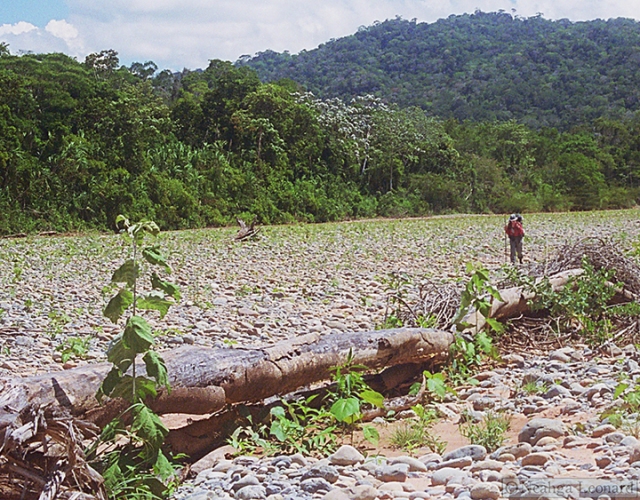
Basla saplings – Bolivia
The most interesting of the plant defenses, to my mind, is animal co-option for defense. Ants are probably the animal most often co-opted by plants. We don’t often think of plants as being the ones to manipulate animals, but that is more a reflection of our animal bias than of the true nature of things. Plants are highly manipulative, in their slow manner. Like many effective manipulators, they accomplish their ends via bribes (and in a few cases by outright lies – orchids tricking bees into trying to mate with the flowers is a classic example of vegetative duplicity). Ants are employed as guards by a great number of plant species.
When I first arrived in the Amazon I recall thinking to myself, “Cool, I hope I get to see some of the ant/plant mutualism.” The first plant I looked at closely was a common understory shrub in the widespread and diverse Melastomataceae family.
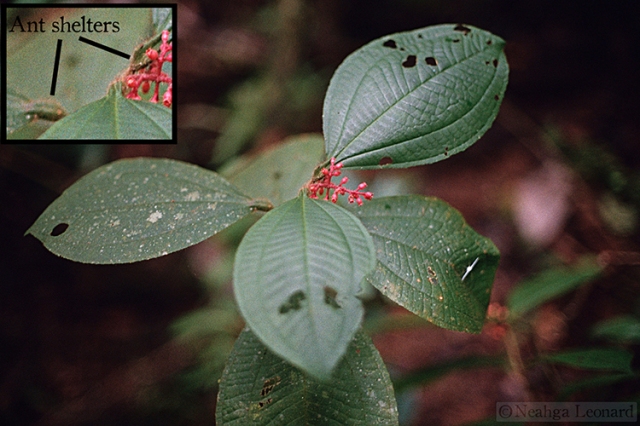
Melastomataceae with ant sheltering nodes at the base of the leaves – Peru
At the base of each leaf there was a hollow, swollen node with two small openings on the underside. Tiny ants occupied these nodes and would rush out to defend the plant when it was bumped. This is a surprisingly effective defense against herbivores of all sorts, insect and mammalian. All through the Amazon (and elsewhere in the world) ants and plants have banded together. I found arboreal ferns with hollow rootballs harboring and colonies, tall cecropia and smoke trees (“palo diablo” – devil trees) with hollow trunks harboring vast numbers of fierce and painful fire ants, and evocative single species plant stands called Chullachaqui gardens.
According to legend the Chullachaqui is a forest guardian spirit that keeps small monoculture garden plots scattered here and there in the forest. One should be wary entering these areas, ask permission first, and be careful not to damage any of the plants the Chullachaqui grows. This is good advice as the Chullachaqui gardens are home to a species of ant that lives underground and kills all the plants growing on the surface except for one species. Animals that interlope are attacked also attacked and the bite and sting of the ant is painful as it contains formic acid.
One of the neatest ant-plant interactions comes in the form of hanging “ant gardens”.
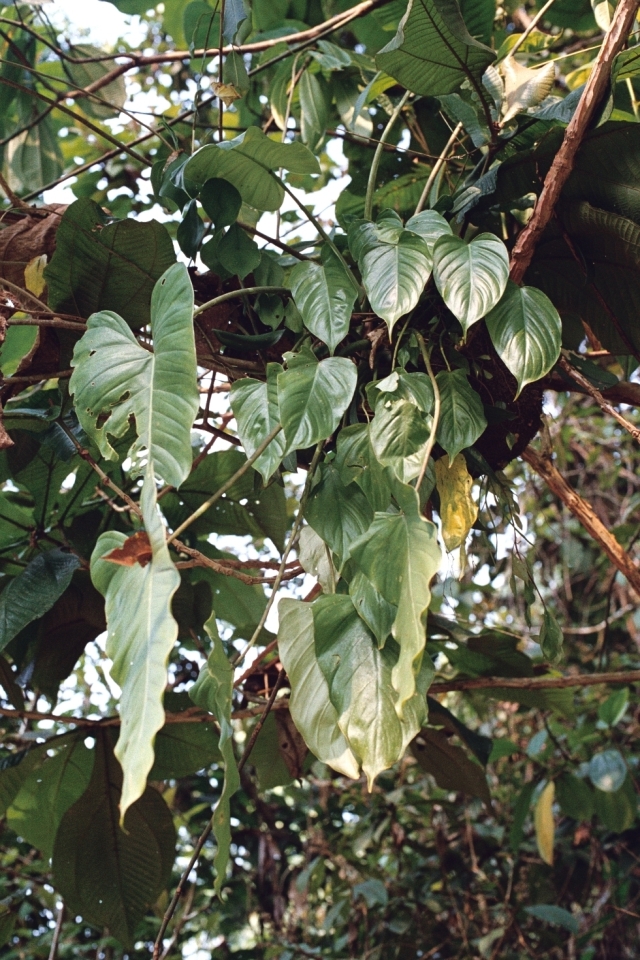
Ant garden in Peru with Monstera spp.
The dense cluster of plants in the above photo is growing from an arboreal ant hive. Certain plants produce seeds with fatty nodules on them that ants eat. Ants collect the seeds and store them in their hives, clipping the edible portions off as needed. Some of the sees sprout and send their roots into the rich material of the ant hive, reinforcing it and protecting it from rain and predators as they grow. These hanging ant gardens are found throughout the tropics.
Ant-plant interactions are not limited to the tropics. Some trillium species bribe ants with food to carry their seeds to good growing locations and elderberries in certain portions of North America keep a protective coterie of ants nearby by bribing them with sugar produces from nectaries grown specifically for the ants.
Co-opting an animal may well be the most sophisticated of plant strategies for its subtly, specificity, and efficiency. Energy cost is at the root of all these strategies. A plant only has as much energy as it can collect from the sun and soil nutrients. It must balance its energy use amongst growth, reproduction, and defense. Every defense a plant employs lessens the amount of energy it can devote to growth and reproduction. Combining forces with other species can provide a relatively low-cost way for a plant to gain an aggressive, mobile, multi-pronged defense force. Ants, for example defend their plant hosts with both physically damaging attacks and with chemicals. That’s a two-for-one defense with an added bonus of rapid deployment for the relatively minimal investment of a home or some food.
Humans may well be mammal plants have trained best.
***
A note about the images and film vs digital in the field:
These photos (with the exception of the hibiscus leaf which is not mine) were taken in 2005 with a well used and abused Canon AE1 with a 50mm 1.4 lens and scanned from the negatives by the developing kiosks in Peru and Bolivia. The quality of images reflects both the environmental stresses put on the camera and film and the irregular scanning quality.
For long periods of time in the field I still think that film is the better option. I was in the jungle for months at a time, sometimes in places with no power (20+ days hiking and on a raft in Bolivia for example) and in hot, humid conditions with frequent thundering downpours and rampant mildew growth. I love the digital camera I use now, but it would have been completely unusable for the majority of the time I spent in South America.
Film cameras do still have their place.
